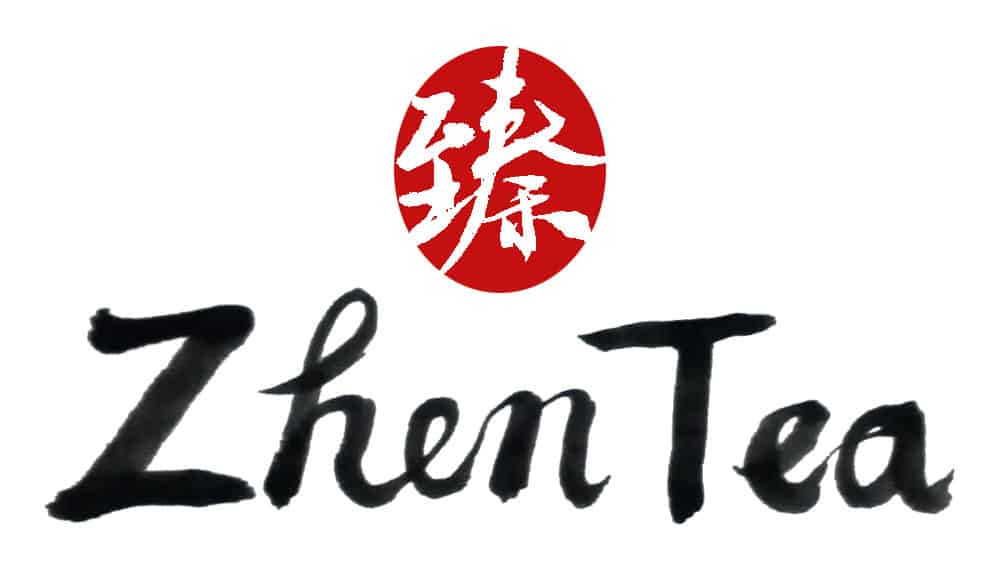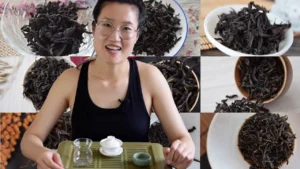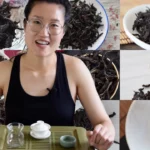Are you a green tea lover? Have you tried to brew green tea in a gaiwan. Often, people feel tricky steeping green tea in gongfu tea style. In this post, I’d like to answer a few common questions and hopefully, your next gongfu green tea session will be much more enjoyable!
Teaware options for brewing green tea
Let’s talk about the brewing vessel in terms of green tea. In this demonstration video, I chose to brew this green tea in a gaiwan. However, the most common, the most traditional, and the most authentic way of brewing green tea is actually in a glass cup. In previous post, I explained how to brew green tea in a glass cup; that is the most professional way to brew. When brewing green tea in a glass cup, there are a few variations depending on the different types of green tea. You might brew that is slightly different. And that’s the way we brew green tea when we’re evaluating tea as well.
Another way to enjoy green tea is to still brew in a gaiwan and sip directly from the gaiwan, which I also did a video on a while ago. If you’re interested, check that out. Both of these two ways of brewing green tea have a long, long history, and it’s way more authentic than this kind of infusion-by-infusion brewing green tea in a gaiwan. However, this way of brewing green tea also has some advantages that the other two ways don’t have. Of course, the basic is you can enjoy how the tea changes in different infusions, but this way, you have way more control in terms of how you brew, and you can use different techniques and skills to bring out the best of the tea while hiding the shortcomings of the tea. Well, if you do the traditional glass brew, it’s like a hardcore test for the quality of the tea. The tea leaf is there with the liquor; how does it taste? What does the tea leaf look like? Everything will just be displayed in front of you. A little bit brutal. So with the lower quality teas, glass brewing will really show the shortcomings.
Tips for buying premium Chinese green tea
I remember once, I had somebody tell me that I really don’t like your green tea because all the liquor color is so light. Am I just drinking water? Well, this is very understandable. He’s a wine lover, especially a red wine lover. He loves those deep colors, and that feels more like drinking a beverage, while the fact is, in terms of Chinese green tea, the darker the liquor color, the lower the grade it is. If you buy some supermarket Chinese green tea and some premium-grade Chinese green tea, do a side-by-side brew, same leaf amount, same water, and everything else, you will see a major difference in terms of liquor color.
This is a follow-along style how-to video, aiming to guide you through the process of steeping green tea and build confidence to brew intuitively. Brewing tea intuitively is not brewing blindly. It’s an ongoing conversation with the tea while brewing. Let the tea and your taste buds guide your brewing decisions.
Should I use a filter or rinse the tea when brewing green tea in gongfu tea style?
I don’t rinse the green tea leaves, and I also don’t use a filter, especially with tender young green tea. We eat that all the time; you can cook with it too. Not using a filter or not washing the tea is because, for green tea, we value that trichome and it’s a very important component for the taste. So we want to keep the maximum amount in the tea liquor and enjoy it. But if you like to rinse your tea, feel free to go ahead.
How many infusions should I expect for green tea?
Usually, green tea is not a marathon runner. With a regular leaf amount, it goes about four to five infusions. It really depends on different teas.
I feel like sometimes we will have a mind block with green tea because we have been sipping oolong for quite a while, and we’re expecting that full, booming flavor, while green tea is just not going to deliver that. It has its profile; it has its character. I think we have to adjust our expectations to fit this green tea tasting realm.
As with all teas, the better the quality, the easier it to brew is. This is especially true for green tea. You will notice with a lower quality green tea when you brew, you really have to be very careful with water temperature, with steep time; otherwise, you’ll end up with a lot of bitterness or astringency or, on the other extreme, that you’re very cautious and end up underbrewed, then the flavor is not there. So if possible, choose a higher-grade green tea; that will make your brew much, much easier.









